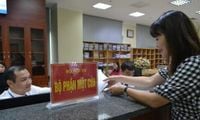On Thursday, May 1, 2025, the Vietnamese government is implementing a significant reform aimed at streamlining its administrative structure at the commune level. This initiative, which involves the merging of various administrative units, is designed to enhance management efficiency and foster local development. While the restructuring promises to improve governance, it also raises important questions about how to appropriately name the newly formed administrative entities.
As countries grapple with the challenges of merging administrative units, the question of naming the new entities becomes a sensitive matter intertwined with history, culture, and community identity. In Vietnam, the process of renaming these units will likely reflect the diverse approaches seen in other countries that have undergone similar reforms.
In France, for instance, since 2010, a model known as "commune nouvelle" has been in place, allowing neighboring communes to voluntarily merge into a single administrative unit. The naming of these new communes must not only comply with legal requirements but also reflect the unique cultural and historical characteristics of the areas involved. France has developed three common approaches to naming post-merger communes. Some regions choose to retain the name of the largest or most historically significant commune, which is often more readily accepted but may leave smaller communes feeling overlooked. Others opt for a hybrid name that combines elements from the names of the merging communes, promoting a sense of unity but sometimes resulting in lengthy and cumbersome names. A third approach is to create entirely new names that are neutral, often inspired by geographical or historical features, such as the name "Beaupréau-en-Mauges," which blends a traditional place name with a broader cultural identity.
In Japan, a wave of administrative reforms known as the "Heisei Great Merger" took place from the late 1990s to the mid-2000s, aimed at reducing the number of cities, towns, and villages. Similar to France, the naming process in Japan is inclusive, often involving public consultations to gather opinions from residents before finalizing the new names. This method not only fosters community participation but also helps to preserve local identities. A notable trend in Japan is to adopt names that are neutral and do not favor any specific locality within the merged area. For example, the city of Minamisanriku in Miyagi Prefecture combines "Minami" (south) with "Sanriku," reflecting both geographical position and regional identity. Additionally, some areas may choose to name themselves after prominent natural features or historical landmarks, fostering a sense of connection among residents.
South Korea also provides a relevant example, where local administrative units such as "si" (cities), "gun" (counties), and "gu" (districts) are often merged or have their boundaries adjusted to improve governance, particularly in rural areas facing population decline. The naming of these new entities is seen as a foundational step in establishing identity and consensus within the community. Local governments often initiate the naming process, engaging citizens through surveys, public forums, or naming competitions. This approach aims to create names that are both symbolic and representative of the merged territories. In 2012, for instance, the merger of Yeongi and Gongju counties resulted in the newly named "Sejong," honoring King Sejong the Great, a symbol of knowledge and reform in Korea. The continued use of old names for smaller administrative units is also permitted, preserving historical and cultural connections.
Returning to Vietnam, the government is expected to adopt a similar multifaceted approach to naming the new administrative units formed from these mergers. The process will likely involve consultations with local communities to ensure that the new names reflect the collective identity and history of the areas involved. This participatory approach could help mitigate feelings of loss or disconnection among residents of the merging units.
Moreover, the Vietnamese Ministry of Finance is proposing regulations regarding the funding necessary for implementing these administrative changes, as outlined in the draft amendments to Circular No. 07/2025/TT-BTC. This circular governs the determination of funding sources and the management of funds related to the policies established under Decree No. 178/2024/ND-CP and its subsequent amendments. The policies will apply to officials, public employees, laborers, and armed forces involved in the organizational restructuring.
The draft also highlights specific funding sources for public employees and laborers in public service units, including the utilization of various funds such as the Development Fund and the Supplementary Income Fund. Furthermore, units that merge or consolidate will be required to develop a self-financing plan to present for approval by the relevant authorities. During the interim period before this plan is approved, state budget support will be provided for downsizing policies, ensuring that the transition remains smooth and effective.
As Vietnam embarks on this ambitious administrative reform, the experiences of other countries can serve as valuable lessons. The significance of naming new administrative units cannot be overstated, as it carries implications for community identity, historical continuity, and social cohesion. The Vietnamese government’s commitment to engaging citizens in the process of naming these units can foster a sense of ownership and pride among residents, ultimately contributing to the success of the broader reform initiative.
In conclusion, the merging of administrative units at the commune level in Vietnam is a bold step towards improving governance and fostering local development. However, the sensitive process of naming these new entities will require careful consideration of cultural and historical factors, as well as active participation from local communities to ensure that the new names resonate with the identity and aspirations of the people.





